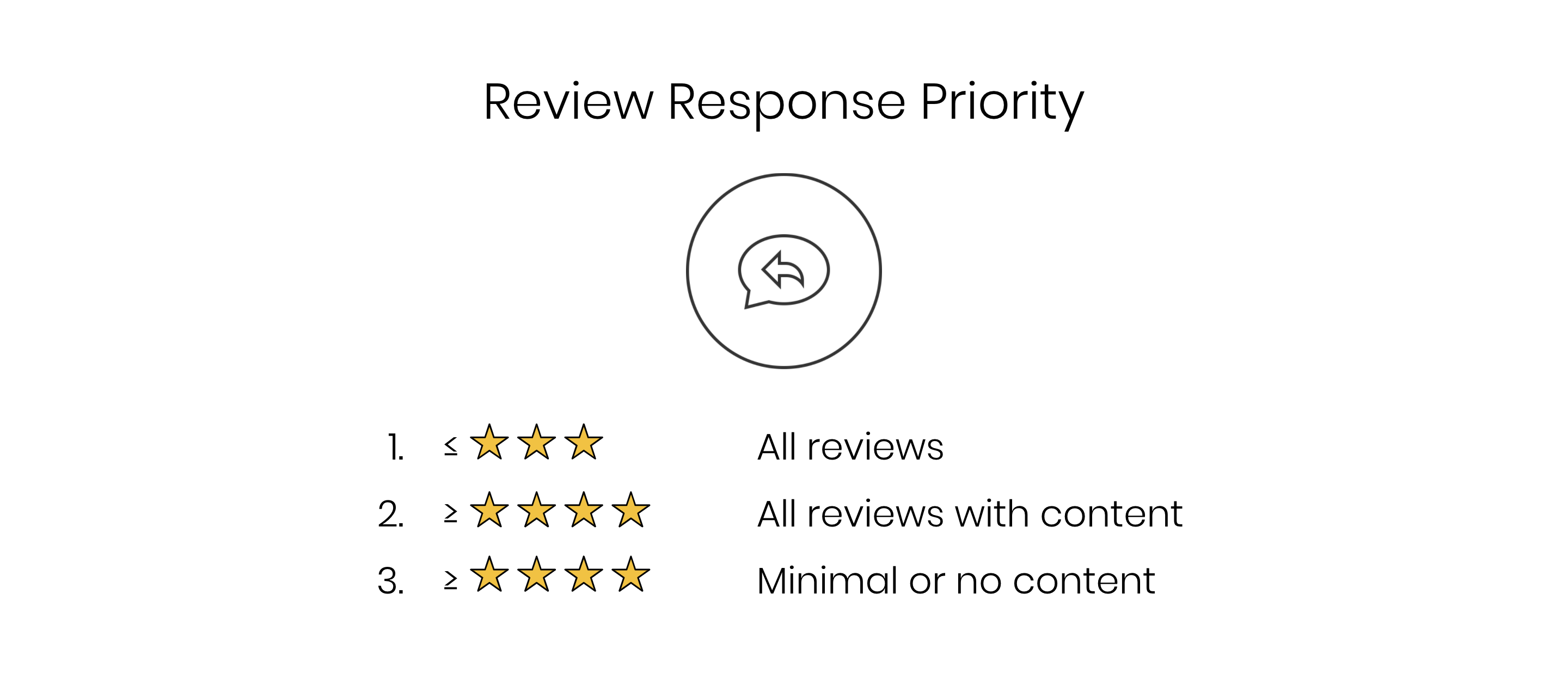Review Response Best Practices | Yext Hitchhikers Platform
What You’ll Learn
In this section, you will learn:
- How to prioritize which reviews to respond to
- Best practices for number of reviews to respond to
- Key sites to respond on
Review Response Best Practices
Responding to reviews is a critical part of an effective reviews management program, but with so many reviews coming in, how do you know which to respond to? Yext completed a study of all clients responding to reviews and identified best practices for achieving optimal results.
Which Reviews Should You Prioritize?
With all the reviews coming in, where do you start? Here are some rules of thumb you can use to prioritize which reviews you respond to:
Reviews with 3 or fewer stars - These should be your first priority. Reviews with lower star ratings will typically include complaints that customers expect to be responded to. For these, you should “Hug Your Haters” – address the complaints and try to win back your customer.
4 and 5 star reviews that have significant content - Higher reviews with a lot of content should be your next priority. You want to “Fire Up Your Fans” – thank them for pointing out the great things about your brand and keep them coming back for more!
4 and 5 star reviews that have minimal or no content - These should be the last priority and only be responded to if your goal is to respond to every review.

Which Key Sites Should You Respond on?
Key sites will vary based on your industry and geography but some sites that you may want to focus on include:
- First-party (your website)
- Yelp
- TripAdvisor
- Trustpilot
How Many Reviews Should You Respond to?
Your target should be to respond to at least 50% of reviews on the key publishers mentioned above. Over time, once you are able to create an effective program your goal should be to increase your response until you are able to respond to all, or nearly all reviews.
The recommended percentage does vary based on things like industry, geography, and business size. For example, we recommend that smaller businesses with only a few locations respond to all reviews, whereas large transactional businesses may find it near impossible to genuinely reply to every review.
How to Respond to Reviews
There are 4 key components of an effective review response. The greeting, the value statement, the sentiment keyword, and the closing. You’ll learn more about each of these in detail in the Introduction to Templated Review Response unit .
Which of these reviews should be your top priority to respond to?
Which of the following sites receive reviews that you are recommended to respond to? (select all that apply)
True or False: If you are an average business starting out a response program you should target to respond to 25% of reviews.
Wahoo - you did it! 🙌

